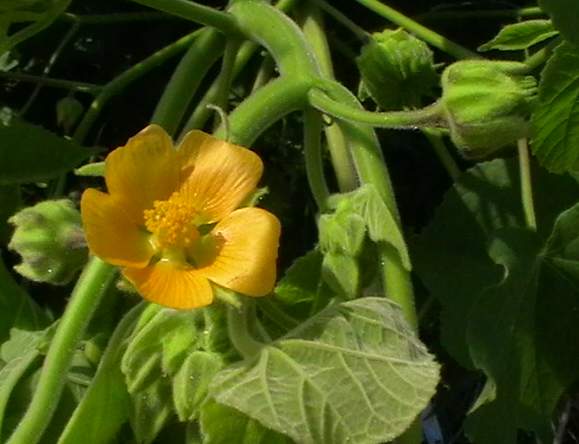Scientists have discovered that plants are far less passive than we first thought and can integrate information to help them make decisions. University of Alberta researcher James Cahill and his colleagues made the discovery by growing specimens of a Chinese flower called Abutilon theophrasti (also called the Velvetleaf or China Jute) either in isolation, or together in the same pot, and then following where the roots went.

In a further twist, the team also varied where the nutrients were in the soil in the pot; in some cases the nutrients were evenly dispersed throughout, in other cases closer to one plant than another, or in the centre between two competing plants. In each case, after the plants had matured, the researchers chopped the leaves off and injected coloured dyes down the stems to mark up the tissue so that the root systems from each plant could be distinguished and measured. Plants growing in isolation on soil with homogeneous nutrient supplies produce extensive root balls, as do plants growing on soils where the nutrients are eccentrically placed, whilst plants growing in competition on soils with homogeneously-distributed nutrients avoid each other like the plague and the roots never overlap.
But the real surprise came when the team tested what happens when the nutrients are placed between the two plant specimens. This time, it turns out, the plants will allow their roots to overlap each other, indicating that they are weighing up the costs and benefits of competing with their flower-bedfellow whilst simultaneously gaining access to a limited resource.
This level of integration and decision making had never previously been appreciated in plants, which appear a "hole" lot sharper than we first thought!










Comments
Add a comment